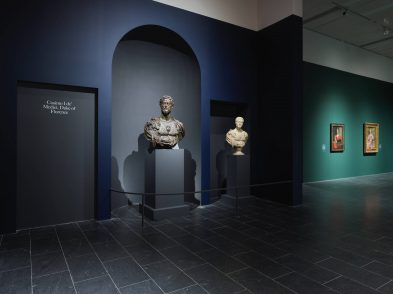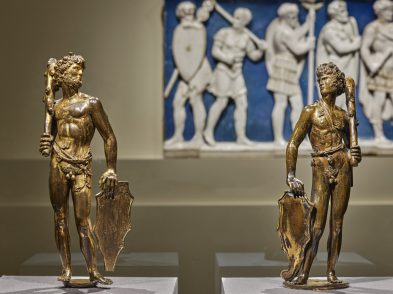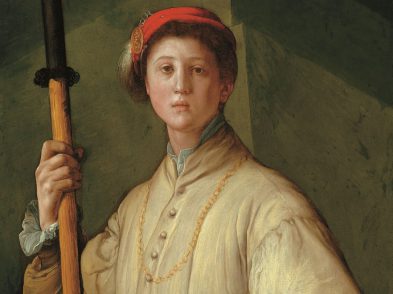Those stateside who love Florentine art must have been very, very good this year. In addition to exhibitions at the Met and the Frick featuring work by Andrea del Sarto is the small, jewel-like exhibition ‘Maestà: Gaddi’s Triptych Reunited,’ opening December 11 at the New-York Historical Society.

Recently restored, Taddeo Gaddi’s devotional painting Virgin and Child Enthroned with Ten Saints (Maestà), ca. 1330–34, is on view and, in a dramatic touch of art historical showmanship, the central panel, part of the New-York Historical Society’s collection, is being displayed with what experts believe are the original two side wings, or sportelli, on loan from the Alana Collection in Newark, Delaware.
Taddeo Gaddi was a prized member of Giotto’s workshop for almost 25 years until the master’s death in 1337. Just as Gaddi’s frescoes in the Baroncelli Chapel and the refectory of the church of Santa Croce show the undeniable influence of Giotto’s breakthrough naturalistic style, so Gaddi’s Virgin and Child at the Historical Society recalls elements of Giotto’s 1310 Ognissanti Madonna,now housed in the Uffizi Gallery. Careful viewers will mark the similarity of Gaddi’s expressions, gestures, drapery and colors to those of Giotto’s altarpiece in this much smaller painting, in which the patron saints, including Florence’s John the Baptist in the upper left, replace the cluster of angels in Giotto’s monumental panel.
Gaddi’s tempera, gesso and gold leaf triptych was commissioned by a wealthy Florentine patron for worship in a private, domestic setting, possibly a family chapel. Roberta J. M. Olson, curator at the Historical Society, notes the painting’s social significance: ‘the panel reveals a growing economic prosperity and worldliness but also personal piety.’
How the Gaddi panel came to be part of the Historical Society is also a story of American prosperity and worldliness, one that prefigures the later European buying sprees of the young nation’s barons of industry. The painting, along with several hundred other artworks, was bequeathed to the museum in 1867 by Thomas Jefferson Bryan, among the first major American collectors of European and American art. Bryan, born around 1800, lived extensively abroad, where he bought up works by, among others, Giotto, Cimabue, Botticelli, Perugino, Leonardo da Vinci and Titian. Returning to New York from time to time, in 1852 he established the Bryan Gallery of Christian Art in lower Broadway (a block west of The Florentine’s favorite New York haunt, Mi Garba). Before he was lost at sea somewhere between Le Havre and New York in 1870, he had amassed such a collection that a friend described calling upon him at home in New York as ‘like visiting . . . a merchant-prince of Florence, in her palmy days.’
The exhibition, which runs to March 20, includes other fourteenth- and early fifteenth-century works from Bryan’s collection, as well as Thomas Sully’s portrait of Bryan.
‘Maestà’: Gaddi’s Triptych Reunited
December 11, 2015–March 20, 2016
New-York Historical Society
170 Central Park West at Richard Gilder Way (77th Street)







